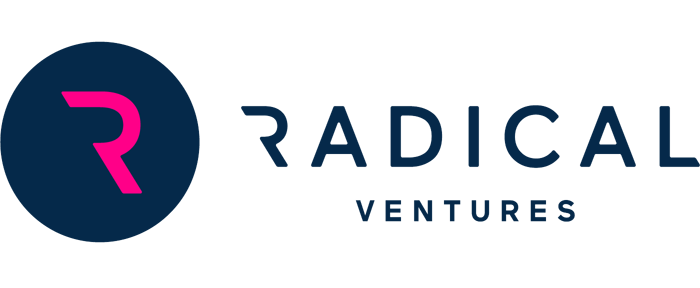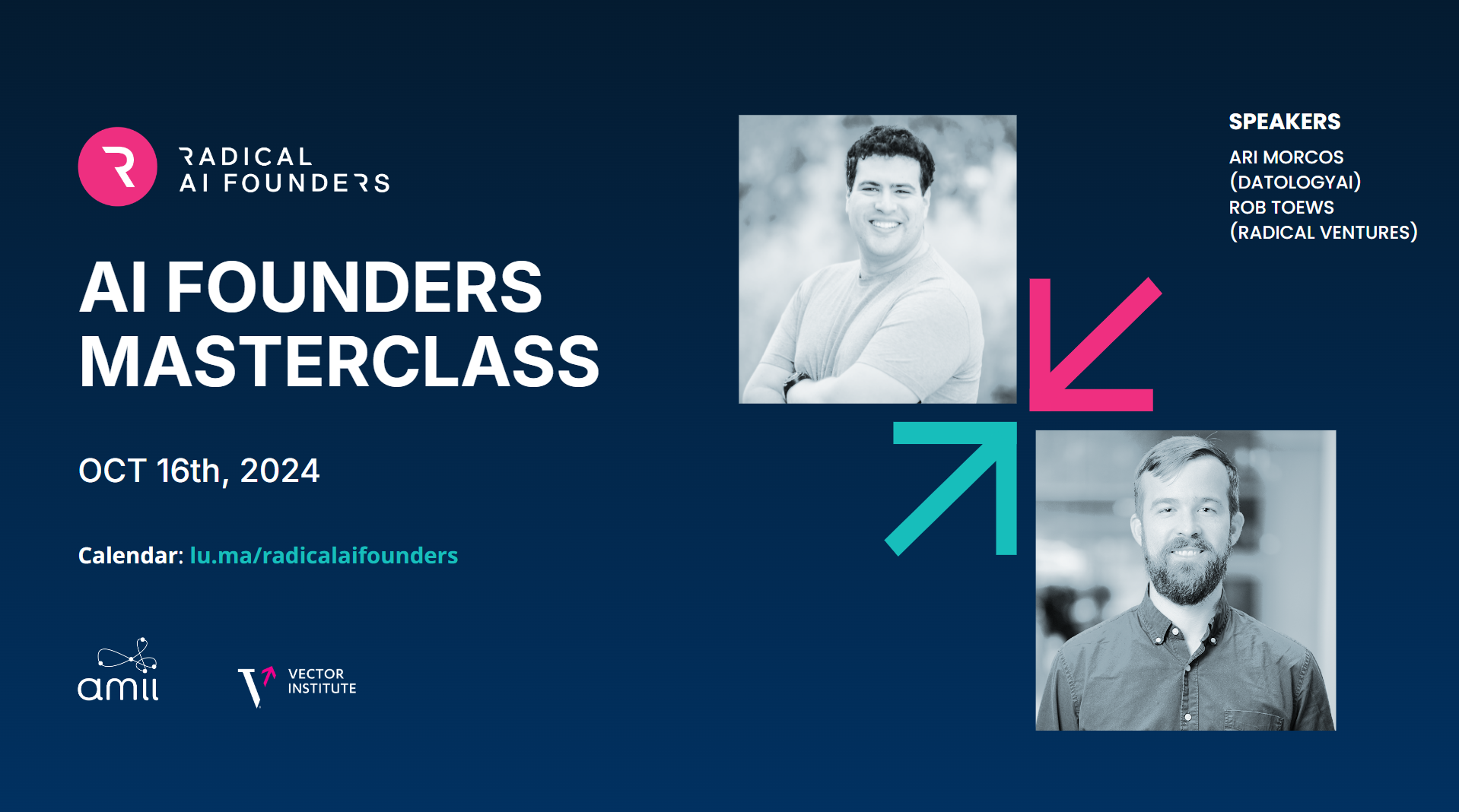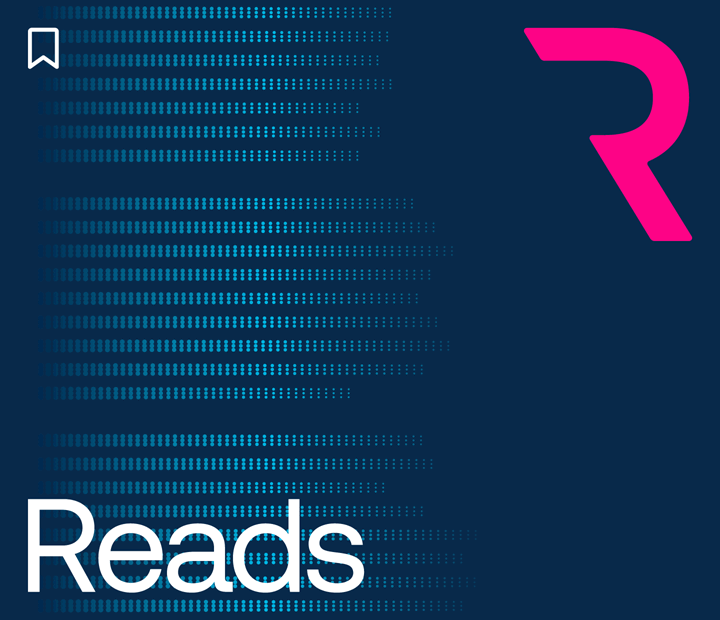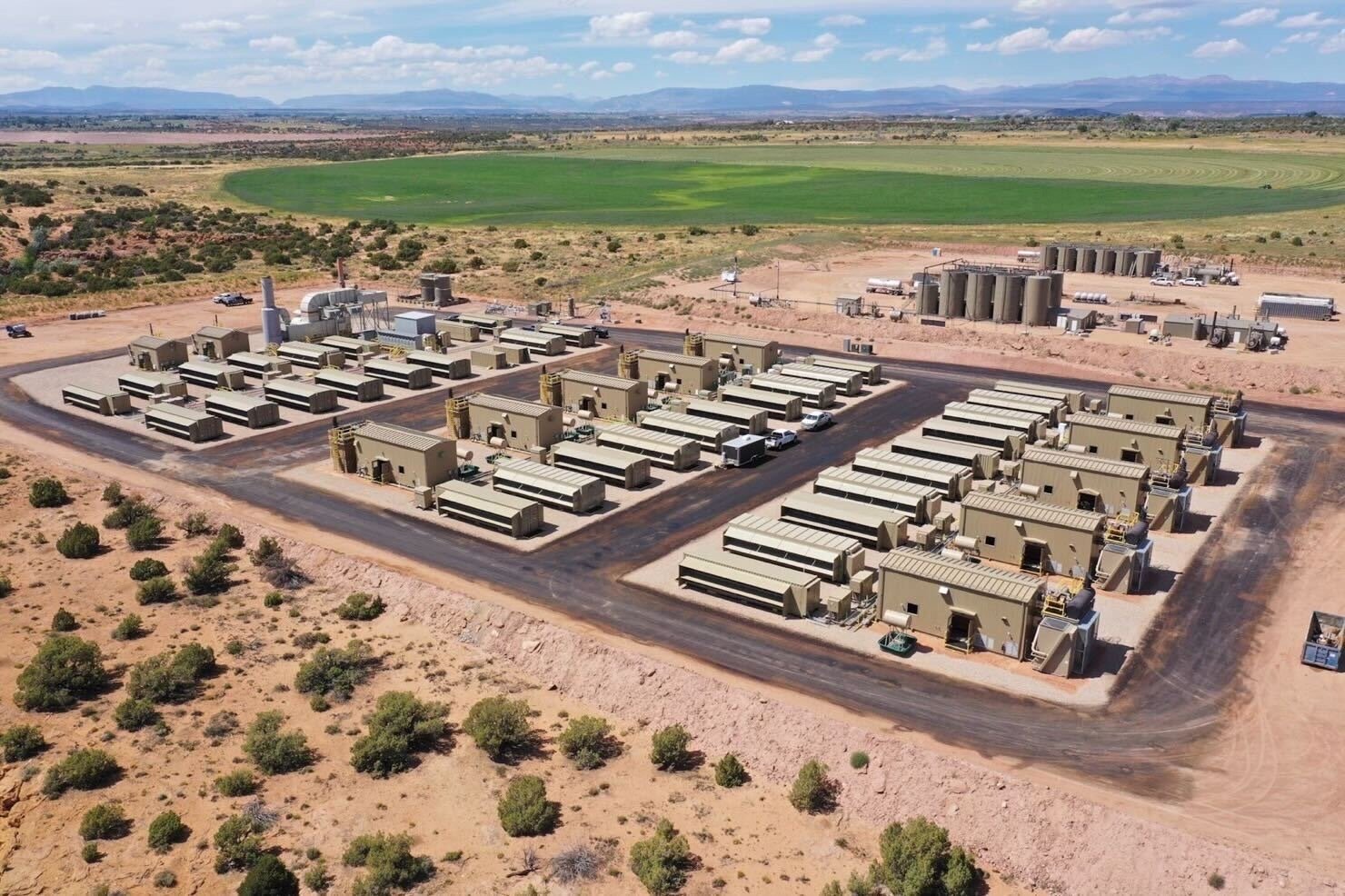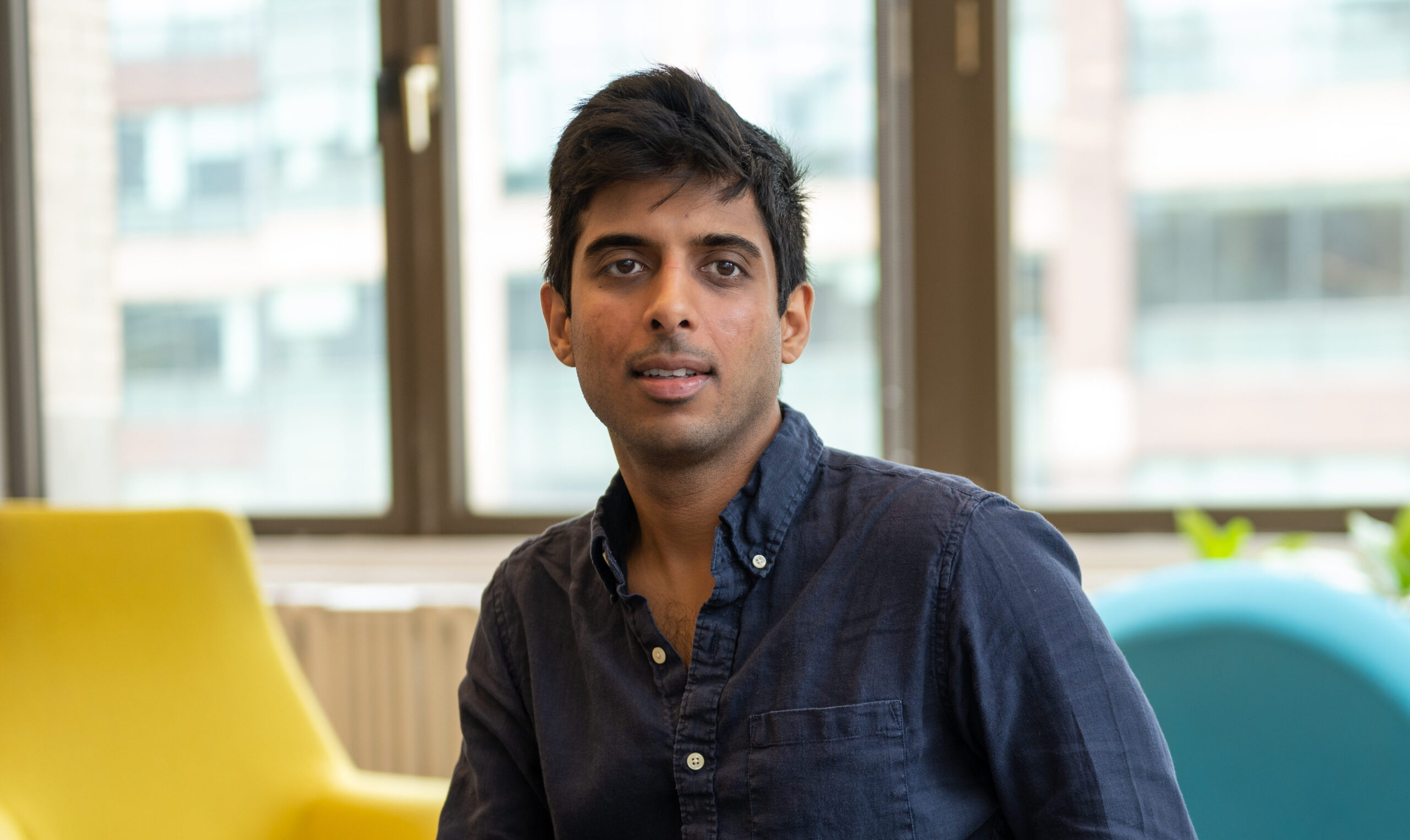The 2024 Radical AI Founders Masterclass continued this past week, featuring Ari Morcos, Co-Founder and CEO of Radical portfolio company DatologyAI, in conversation with Rob Toews, Partner at Radical Ventures.
Ari shared his insights on team building for research-focused startups and practical tips for identifying talent that will thrive in a startup environment. The following excerpt has been edited for length and clarity.
Rob
As a commercial venture with a strong research arm, how have you approached team building and hiring at DatologyAI?
Ari
Team building is arguably the most important thing you do as a founder. While strategy matters, excellent execution is critical – and execution comes down to having the right people at the table.
In the competitive AI market, it’s better to not hire than to hire someone problematic. We’ve intentionally grown more slowly than similarly funded companies because we maintain an extremely high bar for hiring. This means we have to ruthlessly prioritize, but it’s worth it to ensure we only bring in exceptional people who elevate the entire team.
Culture is crucial even for a small company, and you have to focus on it from day one. While you absolutely want to hire great technical people, you also need to make sure they really get what a startup is. Startups are freaking hard – you are constantly in the fog of war, there’s no certainty in anything, everything is uncertain.
Also, as a leader, the buck stops with you. There’s a fundamentally different sense of accountability than at a large company. When I was at Meta, and something wasn’t going well, I could blame people above me. There’s no one to blame at DatologyAI.
The AI market presents unique challenges. Offers are extremely competitive, and there’s intense FOMO during this pivotal moment in the field. You need team members who understand that startups are an endurance exercise in problem-solving – by the time you put out one fire, two more have likely started. The key is finding people with the right personality and mindset for this environment.
We deeply assess how candidates approach conflict and failure. Most of the time, you’re banging your head against a wall, and you need people with the perseverance to keep going until they finally make progress. This is a totally different mentality than working at Big Tech, where senior roles can become quite comfortable.
Rob
That’s an excellent point, and it really highlights what it means to be a founder – the unique challenges and opportunities that come with it.
Watch the full conversation between Rob Toews and Ari Morcos here.
AI News This Week
-
AI scans RNA ‘dark matter’ and uncovers 70,000 new viruses (Nature)
Researchers have leveraged AI to uncover over 70,000 previously unknown RNA viruses, many of which inhabit extreme environments like salt lakes and hydrothermal vents. The team used a transformer-based AI model along with metagenomics, a technique in which scientists analyze genomes in an environment instead of culturing individual viruses, to analyze protein structures and identify viral RNA-dependent RNA polymerases (RdRps). The study, published in Cell, highlights the potential of AI in exploring the “dark matter” of the RNA virus world. This method could help uncover viruses that cause unexplained illnesses and expand our understanding of viral biodiversity and evolution.
-
AI art: the end of creativity or the start of a new movement? (BBC)
AI is revolutionizing the art world, from AI-generated paintings selling for thousands of dollars to humanoid artists like Ai-Da creating self-portraits. While this technological shift raises questions about the definition of art and creativity, experts suggest it resembles historical disruptions like photography, which initially threatened painting but ultimately sparked new artistic movements. Current discourse among artists reveals nuanced positions: some see AI as a collaborative tool expanding creative possibilities, arguing that “all artists whether human, robot or algorithm, build upon the works of others.” With the world’s first permanent AI art gallery opening in Los Angeles in 2025 and growing human-AI collaborations, AI appears to be emerging as a new artistic medium that will challenge traditional notions of art.
-
Three new books explore AI's growing influence on human life and society (MIT Technology Review)
A trio of new books examine different perspectives on AI’s integration into society and human experience. In “Devil in the Stack,” technology journalist Andrew Smith learns to code to understand the logic behind modern technology, warning about AI’s increasing opacity and suggesting regulation as computers become more deeply embedded in human life. Wharton professor Ethan Mollick offers a more optimistic view in “Co-Intelligence,” drawing from his research showing AI users outperform non-users in knowledge work, while cautioning against over-reliance on AI that could diminish critical thinking – what he calls “The Button” problem. Poet Hannah Silva’s “My Child, the Algorithm” takes a more personal approach, weaving together memoir and AI-generated text to explore parallels between algorithmic and human learning, using her experiences as a single parent to examine questions of identity and authenticity in an AI-augmented world. Together, these works highlight the complex relationship between humans and AI technology, from practical applications to philosophical implications about creativity, autonomy, and human nature.
-
Memory chips emerge as the new AI bottleneck (The Economist)
High-bandwidth memory (HBM) chips have become crucial for AI development, with SK Hynix controlling over 60% of the market and over 90% of the advanced HBM segment. These specialized memory chips are designed to speed up AI model processing by integrating stacked memory chips with logic chips, reducing the time needed for data transfer in AI operations. While SK Hynix reports record profits and has seen its share price double over two years, the other leading HBM manufacturer, Samsung, is struggling with production issues. The HBM chip shortage is becoming a geopolitical concern, with the US considering restrictions on exports to China and pressing South Korea to limit shipments. Both SK Hynix and Micron have pre-sold most of their 2025 HBM production, indicating continued supply constraints despite billions being invested in expanding manufacturing capacity.
-
Research: Strategic insights from simulation gaming of AI competition dynamics (Wichita State University, University of Cambridge, University of Oxford, Monash University)
Researchers analyzed 43 simulations from the game “Intelligence Rising,” in which players pretend to develop and deploy Artificial General Intelligence (AGI). The study revealed that while AI development holds great potential, it also poses significant challenges such as aligning corporate and national interests. International cooperation is vital for overcoming these challenges. The simulations demonstrated that trust-building, international agreements, and robust verification protocols are necessary for positive outcomes.
Radical Reads is edited by Ebin Tomy (Analyst, Radical Ventures)
